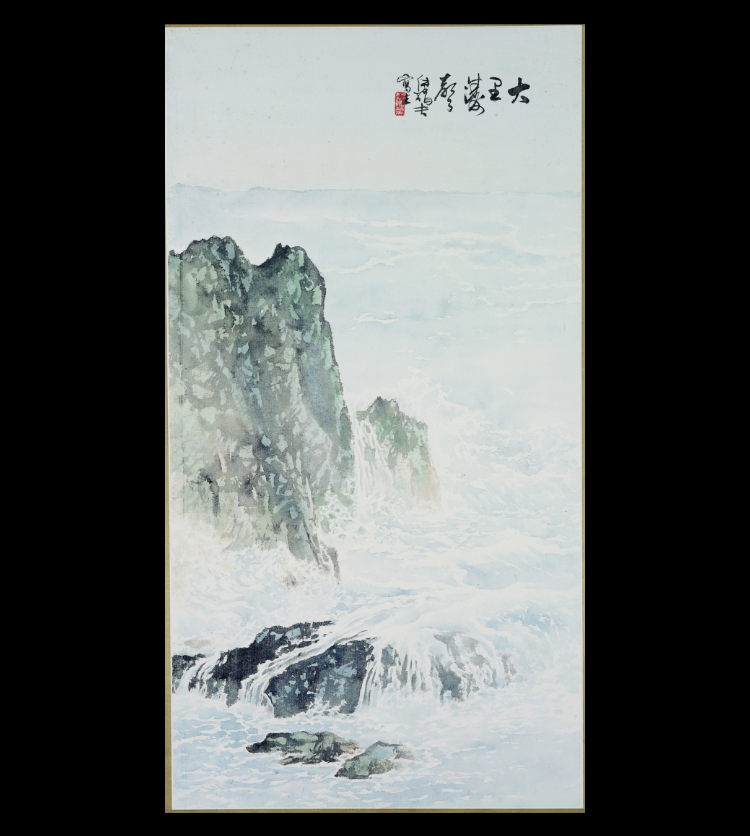On a boat from Shanghai to Taiwan in the spring of 1949, Fu Juan-fu became familiar with the fathomless depths and billowing waves of the ocean. He described the vastness of the ocean and his emotions as “dark waters of the deepest black and waves rising like mountains”. Later, he had the opportunity to travel to Dali in Yilan by train, located in northeast Taiwan, where he saw the waves with their myriad changes and the steep cliffs of the shore. For this sketch, he carefully observed the swaying waves on the shore and the billows produced by their clashing encounter. To portray the many changes produced by the waves rolling onto the rocks and back off, he developed his own unique blotting technique to record the transient spray and the surging waves.
People of the more distant past portrayed water with lines. Although this can successfully express the rising and falling of waves, water does not have a fixed form. Using lines to define the water limits the expression of the countless changes of the ocean spray. After ten years of research, Fu Juan-fu finally pushed beyond traditional descriptive techniques, using the boneless brush technique in combination with rendering and blotting to show the gusts of the spray. Fu raised the techniques for painting water to new heights—a unique accomplishment.
With techniques developed by himself, Fu Juan-fu sketched the nature of Taiwan’s mountains, clouds, and waves, becoming one of the masters of Taiwanese landscape painting.
